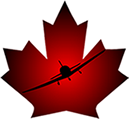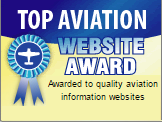 |
|
Safety, Back to the Basics“Flying is so many parts skill, so many parts planning, so many parts maintenance, and so many parts luck. The trick is to reduce the luck by increasing the others.” — David L. Baker — When we think about aviation safety, we normally consider what we must or can do while flying. Of course, our actions or inactions during flight are very important to flight safety, but they are certainly not the whole story. There are a number of critical steps we might want to consider before we even turn the key or spin the prop to start the aircraft. Luck may be useful; we certainly don’t want to turn it down, but we don’t want to rely on it either. It’s probably a much better plan to take care of what we can as best we can so we don’t have to count on luck to see us through. If we get right down to the basics, there are three elements involved in flight: the pilot, the machine, and the environment in which the flight will be conducted. All three elements must be taken into consideration prior to commencement of a flight if the inherent risks of flight are to be mitigated. So, what about the pilot? Your life and the lives of your passengers and those on the ground are in your hands so it is important to ensure you are qualified and ready to assume the responsibility of acting as pilot-in-command of a particular aircraft on a particular day. Based on available accident statistics developed by the Transportation Safety Board in Canada and the National Transportation Safety Board in the United States, pilot error is the cause or a significant, contributing factor in the vast majority of aviation accidents and occurrences. A safe pilot is the single most important key to safe flight. Is your license valid for the intended flight? Is your medical certificate up-to-date? Are you well and healthy and rested? When was the last time you acted as pilot-in-command? Are you current and confident in your own knowledge and skills to operate the particular aircraft you intend to take flying? If you are not current on the particular aircraft you intend to take to the air, get a checkout with an experienced pilot, someone who has experience with the make and model you intend to fly. Just because a person has 10,000 hours in 757s doesn’t mean he or she can slide into the pilot seat of any other aircraft without a proper checkout including a thorough review of the aircraft’s POH. We need to know the machine we will be flying and be familiar with its systems and recommended procedures. Being correctly licenced, medically validated, and current on the aircraft we intend to fly is still not quite the whole picture. We also need to ensure we are safe to fly TODAY. The “IMSAFE” list is an excellent item to put on the list of things to check prior to flight. It’s a simple checklist of considerations to ensure we are good-to-go. I: Illness - do I have any symptoms? M: Medication - have I been taking any prescription, over-the-counter or any other drugs that might affect my performance? S: Stress - am I under any psychological pressure from my job or home or relationships? Do I have health, family, or money problems that might affect my performance as a pilot? A: Alcohol - have I had anything to drink in the last 24 hours? Do I have a hangover or other post-drinking symptoms that might affect my piloting abilities? F: Fatigue - how much time has passed since my last flight? Did I sleep well last night and am I adequately rested and feeling fresh and clear? E: Eating - have I eaten enough of the proper foods to keep me adequately nourished during the entire flight? Before taking on the responsibility of flight, it is very important to ensure you are happy and healthy, your eyesight is either excellent or corrected to excellent, and you are feeling well, rested, and focused on the particular day you intend to take to the air. Just because we hold a valid medical certificate doesn’t ensure we are fit to fly. Now that we know whether or not we have a pilot ready for flight, let’s consider the aeroplane itself. For a flight to be conducted safely, the machine we will trust to take us into the air must be properly certified, maintained, inspected, fueled, and loaded prior to flight. I’ve become a bit spoiled in the area of maintenance since most of my flying is in commercially maintained and operated aircraft. I don’t want to suggest private aircraft are not often maintained to a very high standard. Most are. Some, however, while meeting the minimum requirements, may not be maintained to the same standard as commercially operated machines. Typically, privately owned, light aircraft fly significantly fewer hours per year than their commercially operated brothers and sisters. A private pilot may fly his or her machine 30 to 50 hours a year on average and many private aircraft never see anything even close to that amount of flying time from one year to the next. I’ve seen aircraft come into the shop we use for maintenance for their annual inspection having flown less than 3 hours in the previous year. While you might suppose that less flying means less wear and tear on an aircraft—and there is some truth to that—sitting for long periods of time can be disastrous to many of an aircraft’s components. Avionics, seals, hinges, exhaust systems, cylinders, pistons, electrical systems, and brake systems all suffer considerably if left to sit idle for long periods of time. Winter-sitting is particularly hard on machinery. If you are flying a commercially maintained, rental aircraft, it’s not a bad plan to have a chat with the organization’s Person Responsible for Maintenance. He or she should be able to answer any questions you may have about a particular aircraft and be able to explain the machine’s maintenance program and condition. If you own and operate your own aircraft, it’s an excellent plan to have a good discussion with your AME and get the best possible advice available on setting up an appropriate maintenance schedule for your aircraft based on how it is actually used. Meeting only the minimum, legal requirements may save a few dollars in the short run and may keep you from any violations, but may not be a wise choice for either safety or the long term well-being of your machine. Don’t put things off any longer than absolutely necessary. Small defects start by being an annoyance but can sometimes evolve into a serious nightmare. As the little poster seen in many flying schools indicates, saying or thinking “It won’t matter” eventually will. Of course, just because your machine is on an appropriate maintenance schedule and is all up to date and current doesn’t mean it is safe to fly TODAY. Before we even think of starting her up, we want to perform a through pre-flight inspection, including confirming the machine is properly fueled and is loaded within the weight and centre of gravity limits. If you’re not quite sure what that means, the aircraft’s Pilot Operating Handbook will have some excellent guidelines. A check-out with a pilot experienced on the particular type can also be very helpful. If there are any difficulties with the machine, the very best place to discover them is on the ground, particularly at your home aerodrome where you have your whole support network just at hand. The environment in which a flight is to take place—weather and other environmental considerations—is a topic we’ll leave for another day, but it is certainly one that does assume a significant importance in our checklist for ensuring safe flight. Weather is at least a contributing factor in a significant number of aviation incidents and accidents. When thinking about flight safety, it is important to start with the foundational matters: the pilot, the aircraft, and the environment. If we are careful and thorough with the foundation, we set ourselves up for a much better likelihood of success as we proceed with a flight.
|


